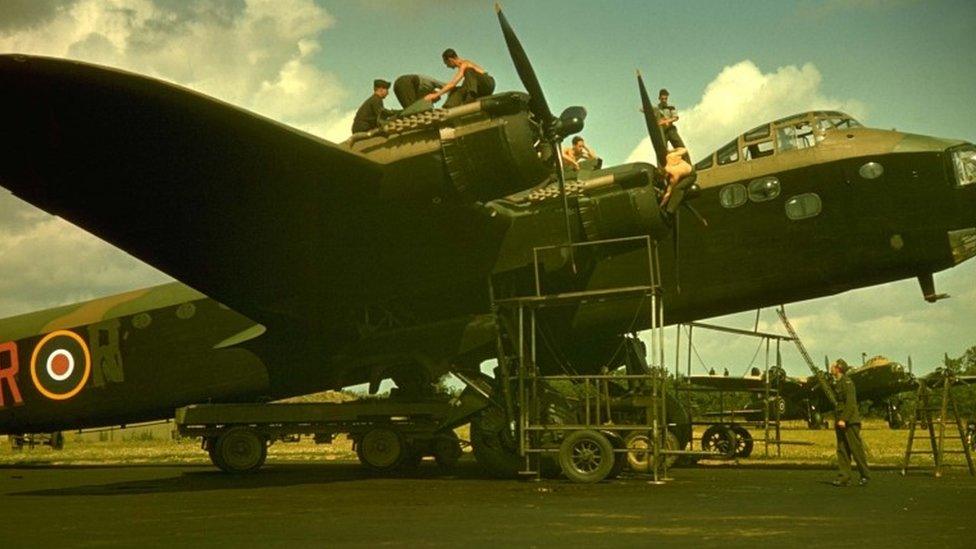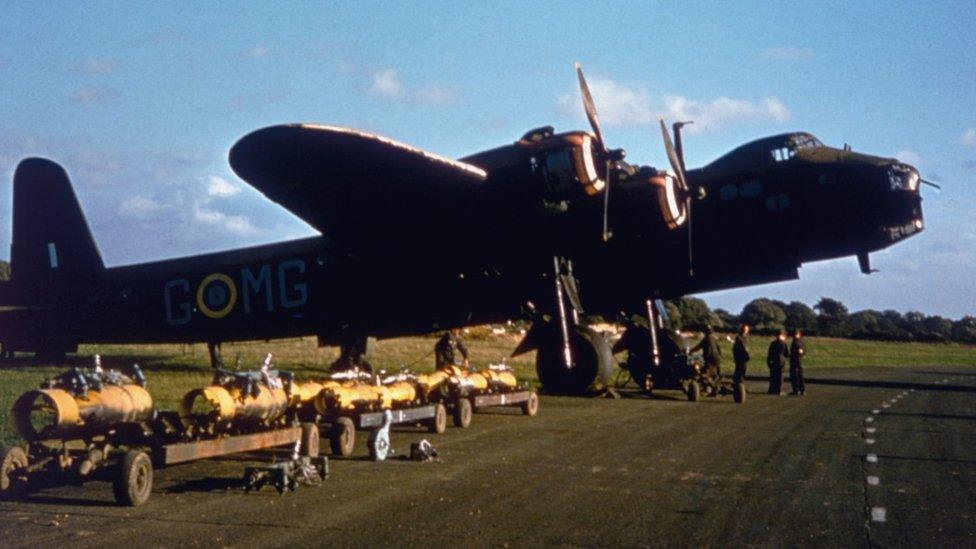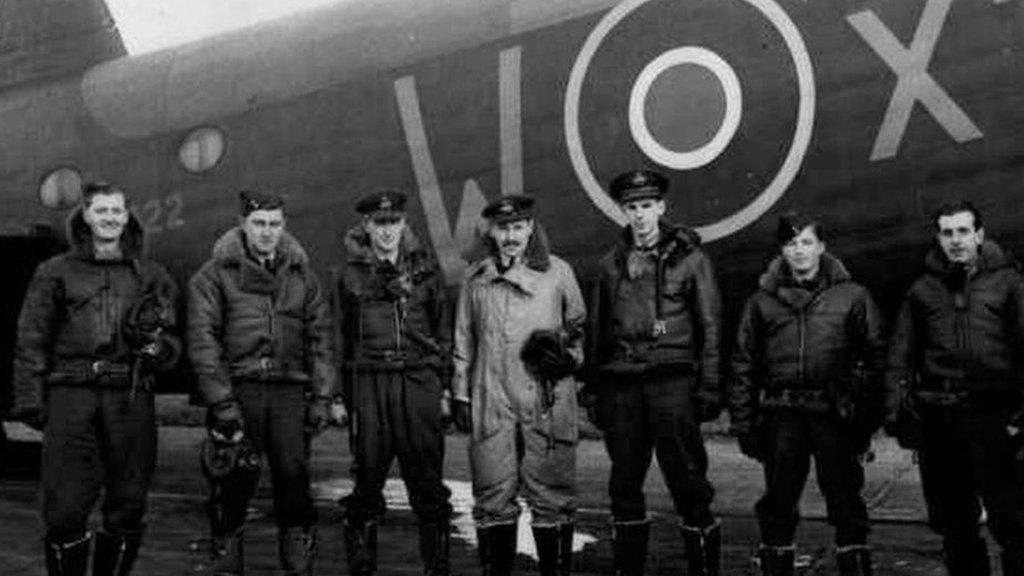Dutch using digger to lift RAF WW2 plane despite anger
- Published

The Short Stirling Bomber BK716 was lost when returning from a bombing raid in Germany
The Dutch government is to lift a RAF World War Two bomber from a lake with a digger despite claims it was disrespectful to use equipment likened to an "arcade machine grabber".
The Short Stirling Bomber, based at RAF Downham Market in Norfolk, was lost returning from a 1943 raid on Germany.
Plane enthusiasts likened the digger to a game "where you grab a teddy".
The Netherlands defence ministry said it was using a "precision digger" that should not be compared to a grabber.
It announced the plan to start the recovery of the aircraft BK716 - which was found earlier this year submerged in Lake Markermeer, near Amsterdam - on 31 August and said the work was expected to take about five weeks.

Lost bomber crew

This is the type of plane flown by the crew
The crew of Short Stirling BK716 were:
Sgt Charles Armstrong Bell, 29, from Langley Park, County Durham
Pilot Officer John Michael Campbell, 30, from Golders Green, north London
Flying Officer Harry Gregory Farrington, 24, from Niagara Falls, Ontario, Canada
Flying Officer John Frederick Harris, 29, from Swindon, Wiltshire
Sgt Ronald Kennedy, 22, from Newcastle-upon-Tyne
Sgt John Francis James McCaw, 20, from Belleville, Ontario, Canada
Sgt Leonard Richard James Shrubsall, 30, from Iwade, Kent

Danny Keay, who has conducted several aircraft recoveries and helped return more than a dozen airmen from the UK and US, criticised the Dutch decision to use a digger rather than a cofferdam.
In the past when wartime aircraft were recovered from rivers or a lakes a cofferdam was used so the site could be properly excavated and the remains of the crew could be carefully retrieved with any items found near their remains.
A cofferdam would allow water to be pumped out, creating a dry area for land reclamation work to proceed.
Mr Keay said: "The Dutch government, in an attempt to save money, has decided to rip the remains of these seven crewmen apart with a 'grabber'.
"This is in effect like digging blindfolded in a cemetery, hoping to recover someone's loved one that way.
"It is shocking. It is disrespectful.
"I understand the financial burden, but if they're not doing it right they shouldn't do it at all."
Mr Keay has set up an online petition against the plans.

The Short Stirling Bomber was introduced to the RAF in 1940
A spokesman for the Ministry of Defence in the Netherlands said: "We are definitely not talking about an arcade crane/grabber.
"We will be using a GPS-controlled precision digger, which is placed on a work vessel. We will be excavating the lake floor across an area of 75 by 75 metres (246ftx246ft), because the plane is scattered over that area.
"The excavated soil will be sieved. All parts larger than 8mm will be visually inspected.
"By using this method, a larger area can be covered than if a cofferdam were used. It allows us to cover a large area and be flexible in our recovery work."
Plane enthusiast Rick Brooks, from Ashford in Kent, earlier told the BBC he thought the equipment due to be used was like an arcade machine and could be "destructive".

Find BBC News: East of England on Facebook, external, Instagram, external and Twitter, external. If you have a story suggestion email eastofenglandnews@bbc.co.uk, external
- Published12 July 2020

- Published25 January 2020

- Published28 August 2017
